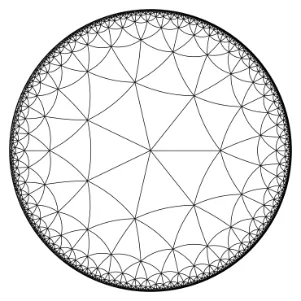Groundbreaking Insights into Spin Glass Order: The Impact of LDPC Codes on Complex Energy Landscapes

In a recent research paper, a team of physicists unveiled a new approach to understanding spin glass order through the lens of Low-Density Parity-Check (LDPC) codes. This study creates a pivotal bridge between coding theory and statistical mechanics, revealing that complex energy landscapes, often associated with glassy behavior in various physical systems, can be rigorously analyzed using the principles underlying LDPC codes.
The Essence of Spin Glass Behavior
Spin glasses are disordered materials that exhibit complex magnetic properties, characterized by a rugged energy landscape featuring multiple local minima. Understanding this complexity has previously relied on sophisticated mathematical frameworks, particularly the replica symmetry breaking (RSB) formalism. However, researchers have found that for finite-connectivity models—those where each spin interacts with a limited number of neighbors—such rigorous proofs have been scarce.
A Novel Approach Using LDPC Codes
In this groundbreaking work, the authors explored the mathematical equivalence between certain models of spin glasses and LDPC codes. They established that, under certain conditions, these models exhibit spin glass order defined by extensive energy barriers around ground states. This finding suggests that the transition into a glassy phase can be mathematically understood without relying on the complex RSB formalism.
The researchers utilized the property of code expansion inherent in LDPC codes, ensuring that the energy barriers formed around these glassy states were sufficiently large to create distinct, long-lived components within the Gibbs state. They showed that these components constitute genuine memory of the ground states of the system, lending insight into both the energy landscape and the dynamics of the spins involved.
Numerical Evidence and Analysis
The study employed numerical simulations on sparse graphs and hyperbolic lattices, investigating the onset of phase transitions that signify the breakdown of ergodicity. The findings illustrate that there are two critical temperatures; one corresponding to weak ergodicity breaking (Tmem) and another indicating full spin glass order (TG). Notably, the temperature at which the system transitions into a spin glass phase (TG) was found to be distinct and lower than that for weak ergodicity breaking (Tmem), a hallmark of spin glass systems.
This crucial distinction implies that while the system retains memory of its initial states (such as during annealing), the deeper landscape reveals a fragmented structure of states that do not contain ground states—a feature indicative of true spin glass order.
The Broader Implications
The research not only advances the rigorous understanding of spin glass behavior but also demonstrates the potential applications of coding theory in physics. With explicit bounds and rigorous definitions, the paper opens up new pathways for exploring physical systems that exhibit glassy behavior, potentially paving the way for more efficient coding systems and improved understanding of non-equilibrium phenomena in complex materials.
As fields of theoretical physics and computer science converge, further investigations could lead to enhanced models and simulations that bridge these disciplines, offering profound insights into both fundamental physics and practical applications in data transmission and error correction.